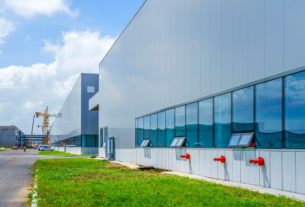The cover image for our May issue shows fruiting bodies of the fungus Microporus xanthopus sprout from a dead log in the Daintree rainforest of Queensland, Australia. This image relates to the article ‘Wood traits explain microbial but not termite-driven decay in Australian tropical rainforest and savanna‘ by Stephanie Law et al. Here, co-author Steven Allison tells us the story behind the image:
The mushrooms were a bonus. Setting down our cooler full of beers and snacks, I couldn’t resist snapping a few pics. The fungi were posing for us, right beside the narrow trail to Emmagen Beach, a gorgeous expanse of tropical sand just north of Cape Tribulation. That afternoon trek was our team’s reward for completing the final field campaign of a long project on wood decay, termites, and fungi (WTF for short).
Like Captain Cook, our science team is no stranger to tribulation. In January 2018, we planned a trip to scope out field sites in Queensland. Brimming with excitement, I arrived in Cairns on a balmy Sunday afternoon. My luggage did not. My first stop in Cairns was the K-Mart where, woozy from jet lag, I searched for clothes that could withstand the field excursions ahead. I did eventually reclaim my luggage—when I flew out of Cairns a week later. The trials and tribulations had begun.
Flanked by the Great Barrier Reef and blanketed by the lush Daintree Rainforest, Cape Tribulation is a UNESCO World Heritage Site in far North Queensland, Australia. Today the area is a big draw for tourists, though one renowned visit in 1770 went very badly. Cape Tribulation and nearby Mt. Sorrow were named by a sullen Captain Cook after he shipwrecked on the reef just offshore.
Improvised wardrobe aside, the trip was very productive. We even made a YouTube video about it! We would follow the decay of 16 native woody species along with standard pine blocks over a four-year period in what lead PI Amy Zanne affectionately calls “rot plots.” Our team set up the plots at the ends of a steep rainfall gradient running from dry savanna in Australian Wildlife Conservancy’s Brooklyn Sanctuary to wet rainforest at James Cook University’s Daintree Rainforest Observatory. Half the wood samples would be protected from termite attack so we could see how important termites were relative to microbial decomposers like fungi.

Middle: The dry savanna site at the Pennyweight Outstation of the Australian Wildlife Conservancy’s Brooklyn Sanctuary.
Right: Mushrooms sprout from a wood block enclosed in mesh to exclude termites in the Daintree Rainforest.
(credits: Steven D. Allison)
We thought for sure that termites would dominate decay in the dry savanna site. Since they can stay hydrated in their nests, we figured termites would keep eating wood under dry conditions. In the rainforest, there were fungi everywhere, so we didn’t think termites would matter much.
It’s a good thing we did the experiment. The results surprised us as much as that submerged reef surprised Captain Cook! You can find the details in our paper, but the upshot is that termites don’t like dry conditions either, so wood decay was slow and mostly microbial in the savanna. Termites munched more wood in the rainforest, but fungi still reigned. That’s why they made the cover instead of a cuddly termite.
(To see how beautiful termites can be, check out When A Tree Falls, a stunning collection of artworks by our Australian collaborator and WTF artist-in-residence Donna Davis).
For a while, the project was going well. There were only minor glitches like finicky weather stations, zombie cyclones, excessive rain, landslides, and wildfires burning through the savanna. Or maybe they just seemed minor after March 2020.
Imagine you are right in the middle of a huge field experiment on the opposite side of the planet when a global pandemic hits, shutting down international travel for nearly two years. Also, your public funding agencies have strict limits on sending money overseas to the people keeping the experiment going. Without the unparalleled generosity of our Australian collaborators, Covid would have sunk the WTF endeavour like Captain Cook’s ship.
By June 2022, we were ready to wrap up our field experiments. Foreigners were finally allowed to visit Australia, so we planned one last trip to collect samples and strategize on publishing. Eleven days before departure, I came down with Covid. Luckily it was mild. I was cleared for travel with one day to spare. I thought I had dodged a bullet.
Although airlines were selling tickets to Australia, they hadn’t quite figured out how to fly their routes yet. My lab manager Elizabeth Duan and I were to fly from Los Angeles to Sydney and then on to Cairns for a Thursday evening arrival. Early the next morning, we would head to the savanna site.
We didn’t make it. First there was a 26-hour delay out of LAX due to mechanical issues. We started wondering if the plane had been out of the hangar since 2020. Then we missed our connection in Sydney due to a lack of baggage handlers. Eventually we landed in Cairns—52 hours late.
Elizabeth had to convince me not to bail on the whole trip after our sleepless night in LAX. Once we got to Cairns, she navigated patiently as I taught myself to drive on the opposite side of the road after travelling 72 hellish hours across 7 time zones.
Then life was good. Our team gathered for a sunset celebration outside Cairns. We adjusted our plans so we could drive along the rainfall gradient and pick up the last few wood samples. On a night hike in the Daintree, we found bioluminescent fungi. We played a prototype card game called “Let’s Rot” that we co-created with our artist-in-residence. We celebrated Rebecca Clement’s PhD graduation with a termite mound cake and crowned her and fellow PhD student Abbey Yatsko termite queens.

Middle: Celebrating Rebecca Clement’s PhD defense with a termite mound cake at James Cook University’s Daintree Research Observatory.
Right: Researchers Abbey Yatsko (left) and Rebecca Clement (right) examine the contents of a termite nest.
(All credits: Steven D. Allison)
With our brains energized by the camaraderie, we immediately got to work writing manuscripts, including the one we just published in the Journal of Ecology. Several others are in the pipeline.
Just like travel, sometimes science doesn’t go as planned. But after all those tribulations, finding a surprising answer—or a charismatic mushroom—makes the journey worthwhile.





